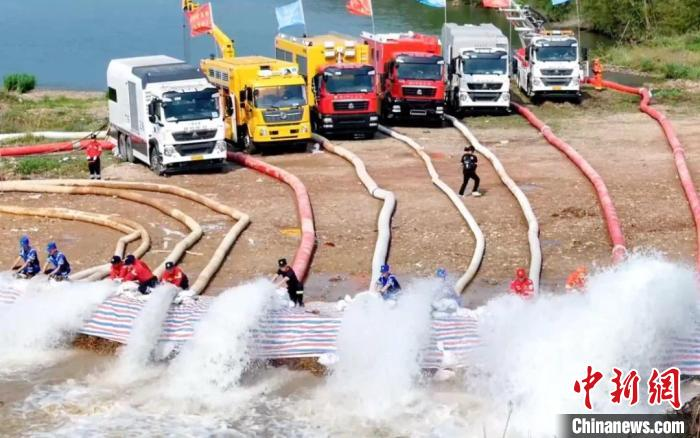
The Office of Guangdong Flood, Drought and Wind Control Headquarters and Guangdong Department of Emergency Management, in collaboration with Shaoguan Flood, Drought and Wind Headquarters, held the Yuefang-2025 Comprehensive Emergency Drill for Flood Prevention, Rescue and Relief Operations in Shaoguan, Guangdong, China on April 21, 2025.
Focusing on preparedness and response to extreme rainfall and secondary disasters, the drill simulated a sustained heavy rain event in Shaoguan, that had caused compound disaster scenarios such as floods of small and medium-sized rivers beyond warning lines, landslides, urban waterlogging, and cutoff of roads, power and communications. The drill aimed to comprehensively test the province’s flood control and emergency command system, the cooperative combat ability of multi-departments and the actual effectiveness of new technology and new equipment in the province.
The drill has designed the following scenes. Sustained heavy rains had led to severe waterlogging in some places of Shaoguan. In a certain section of the river in Wuzhjiang District, the rising flood swept a dozen fishing boats downstream, a number of persons trapped in water were in urgent need of rescue. Landslides swept away roads in several parts of Renhua Town, cutting off power and public telecommunications networks and turning quite a few villages into Isolated islands. With concerted efforts of each department concerned, all these simulated crises were resolved one by one.
The drill has gathered 980 participants and more than 2,000 pieces/sets of equipment, including unmanned aerial vehicles, helicopters, drainage vehicles, and boats. Eight subjects were exercised including consultation and judgment, response and linkage, transfer and resettlement, urban waterlogging rescue, disaster investigation, communication guarantee, restoration of road and power, and three-dimensional rescue on land, water and air.
In response to the cutoff of roads, power and communications, the drill command center applied technical means combining ad hoc network communications, satellite telephones, and compound-wing unmanned aerial vehicle air base stations to restore communications in the disaster area and build an integrated air-ground rescue network. The capability of three-dimensional rescue on water, land and air were also demonstrated by using helicopters to lift bulldozers and excavators and restore the road, as well as transfer stranded persons with electrically-driven boat bridge.
The drill highlighted scientific and technological empowerment and practical guidance, focusing on joint operation of efficient equipment such as intelligent drainage robots, parent-child drainage vehicles, and vertical water supply and drainage rescue vehicles.
During the drill, a drainage truck with maximum displacement of 6,000 cubic meters per hour quickly defused the risk of flooding in the sunken tunnel in Shaoguan Avenue. Equipped with emergency communication load, a large Wing Loong-2 UAV restored the signal of the public network within a radius of 2 km in the disaster area. The compound-wing UAV transmitted back real time disaster images through thermal imaging. All these operations had provided accurate data support for the decision-making of the command center.
Lu Huayou, Deputy Director General of Guangdong Department of Emergency Management said that the drill was a comprehensive test on the province's capacity of flood control and emergency response, not only demonstrating the solid results of the flood, drought and wind control system in recent years, but also accumulating valuable experience in dealing with extreme weather risks.

